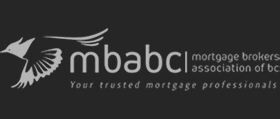I get many calls from people in rural areas wanting financing on their farm, and they’ve often been to every bank in town and cannot get any financing beyond 50% of the value of their property.
This is normal in the current economic environment.
Alternatively, a farm owner sees my residential real estate ads for great low rates and calls me only to get angry at me when I tell them they aren’t eligible for this program due to their house being a farm.
In this article, I’m going to cover out why farms are hard to finance, why banks won’t usually get involved in financing farms, and what alternative programs are available for borrowers (including some details of the government backed CALA loan program).
WHY LENDERS ARE HESITANT TO LEND ON A FARM:
The primary reason that banks and private lenders don’t lend on farms is that they nearly impossible to foreclose on. As a lender, if a borrower doesn’t make payments, you can issue a notice of demand, and start the foreclosure process whereby you take over the property in 6 months time, or force a sale to recover the money you loaned to the borrower. In BC, it is around 6-9 months from start to finish, and this is assuming it is a CLEAN foreclosure with no loop-hole jumping, obfuscation by the borrower, and funny business. However, when you try and take someone’s home, you can expect all of the above.
There are special laws in Canada protecting farmers and their rights. If someone is a mechanic, and you foreclose on him and take away his land, he is still a mechanic. If someone is a farmer and you take away his land, you’ve left him destitute with no means of earning an income AND no home. Clearly the courts don’t want to deprive someone of their ability to live AND work, so there are special provisions whereby if a person is raising ANY crops: even just one sheep, or growing one stalk of corn for resale, they can apply for protection under these laws and prevent foreclosure or court ordered sale (or at the very least, make the process drag out forever…)
For this reason, banks are “out” of the farm financing game for the time being. A couple of years ago (basically from 2001 through 2006) getting mortgages on farms (and anything else, for that matter) was far easier. Money was loose, lenders were flush with cash, and times were good. Since the capital markets dried up in late 2008, it’s a new paradigm of lending, and the properties that are tough to finance now are: farms, fractional interest, and limited time use properties. These three types of property represent the greatest challenge for brokers, and many don’t have a clue how to get them done, or what programs even exist.
The second reason that farms are hard to finance is that farms, like most tax payers, write off as many things as possible so as to minimize their tax payments to government. While this makes great sense to the individual at tax time, it makes financing hard. Banks have “debt servicing requirements” which is a fancy way of saying, “proof of income sufficient to make the payments.” They only use net taxable income (line 150 of your Notice of Assessment or T1 General). If you’ve written off all your income so that you have no tax bill, good luck getting financing. You either win at tax office (by paying less tax) or you win at the bank (by getting the lowest rate in town) but you rarely win at both – and if financing a farm, you likely will NOT win at both.
ALTERNATIVE PROGRAMS AVAILABLE FOR FARM MORTGAGES
So, if not the banks, where do you go? If you’ve been to the banks (and ESPECIALLY if you write down your taxable income) you’ve been told “NO” more times than you can count, and they’ve likely made you feel like crap in the process: as if you’re trying to finance something illegal or financially dangerous!
There are three primary sources of financing:
1. Farm Credit
2. CALA Financing
3. Private Lenders
Let’s look at each in turn.
FARM CREDIT
There is a division of the Federal Government, Farm Credit Canada (http://www.fcc-fac.ca/) that assists farms and agricultural business with financing. This program is government run and backed, and provides loans, mortgages, and venture capital. Check out their website if you’d like more information on them. They are NOT available through brokers, and the client has to deal direct.
You can expect a lot of highly specialized and detailed questions about your farm’s output in terms of bushels, bundles, crops, livestock counts, and everything else. If you don’t know these numbers, or are too new to have them in a cohesive business plan, then Farm Credit Canada is not for you. This organization, it’s loans and programs, are more suited to large scale farming enterprises with accurate record keeping and a history and track record of success who are either a.) Looking to expand their product, or b.) Looking for working capital during off seasons.
I personally have had very little success working these programs with borrowers. I, as a broker, have had to stand aside and let the client and Farm Credit deal directly and they cut me out of the process. Therefore, my details regarding Farm Credit are slim. Check out their website and do an application if you think you qualify.
If you are a small single man operation, this isn’t the program for you.
CALA FINANCING
CALA is an acronym for Canadian Agricultural Loans Act. This is a government backed financial program that provides a guarantee to lenders for up to 90% of the loan. This way, if the lender makes a loan, they are 90% covered should the loan go into default and the lender end up in a situation to lose money.
A couple of points regarding these loans:
1. They are available for new and existing farmers (new farmers are those in the business for 6 years or less)
2. They are available for land purchases, livestock purchases, equipment, storage, or just about anything else the farm will require
3. The rate maximum the banks can charge is prime + 1% on a variable and their residential rates + 1% on a fixed rate meaning this is very cheap money!
4. The maximum percentage financing of the farm they can offer (loan to value) is 80% of appraised value or purchase price
5. $500,000 loan maximum for property purchases and $350,000 maximum for everything else
There are a number of exclusions for which these loans cannot be made. For example, “operating lines,” permits, personal vehicles, or construction and improvements to a family dwelling. It must be FARM financing.
These loans are theoretically available through any bank, trust company, credit union, or other financial institution. However, experience has shown that most institutions don’t get involved in this type of lending. I have calls out to Agriculture Canada as well as several institutions and will update this post as soon as I get a firm answer on who is lending under this program. UPDATE UPDATE: I sent an email to the CALA administrators, and they have said that in the last 4 fiscal years only TD Canada Trust and Bank of Montreal have funded mortgages and loans under this program. To their knowledge, no other lender is using the CALA program.
Also, you will not be getting residential mortgage repayment plans. So, you can say goodbye to the 35 year amortized mortgage. Land loans under this program can only be 15 year repayment period, and 10 years for all non land loans. So, you will face some larger payments than you likely expected. There are also some other fees that add up to around 1% that the borrower can be expected to pay to register the loan and get it administered by the government.
For a detailed list of lender guidelines, go to http://www4.agr.gc.ca/resources/prod/doc/prog/cala-lcpa/pdf/cala-lcpa_info_e.pdf and you can read all the fine print about the program.
PRIVATE LENDERS
Private lenders are often overlooked as a source of financing because of their higher rates. Private lenders will typically lend as a 1st mortgage at 6.25% up to 13% (or higher) depending on the level of risk, percentage of the farm’s value borrowed, location of the farm, and credit worthiness of the borrowers. 2nd mortgages are available at rates of 9% to 16% (or higher) depending on the same factors.
Most people read those rates and say, “Well that is just ridiculous. Who would pay those rates?” The answer: a LOT Of people. If the CALA loans are low interest rate, but must be repaid over 10 years versus a higher rate repayable over 25 years, let’s see how it works out assuming a $100,000 1st mortgage.
CALA loans used for plant and equipment (10 year repayment) would have a payment of $1,070 based on a 5.25% interest rate. Also, the money would have to be accounted for, proven to be used for eligible expenses, and all the other rules followed “t’s” crossed and “i’s” dotted.
Private loans at 12% for the same amount over 25 years is $1,054 per month. So, from a cashflow standpoint, it’s basically the same amount, and in this case, slightly less to take the private money. Also, with private money, you simply get a cheque and go spend it on what you want, you likely won’t have to account for it, file expenses, or all that nonesense.
Some private loans are available on interest only terms meaning only the interest has to be paid and the who amount paid some time in the future (perhaps after you’ve built and expanded production and have the higher revenue).
So, there are three different avenues for you to investigate if you are a farmer (or hobby farmer) looking for financing. If you want details specific to your situation, don’t hesitate to give me a call at 604-657-6775 (my direct cell) and I’ll see what we can work out for you.
Thanks again for reading!






how can I apply to buy a farm in bc. they are more than one million dollar? Is it possible? please tell me a big view of getting some loans from Cala more than one million dollar .
Reply